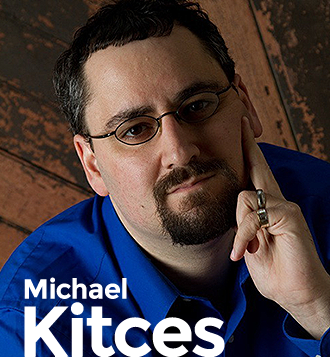
Much has been made of the great wealth transfer about to take place between Baby Boomer parents and their Millennial children. Over the next 30 to 40 years, $30 trillion is expected to change hands.
Unfortunately, that money doesn’t always stay in the family. In fact, 70% of families who use estate planning fail to successfully transition wealth from one generation to the next.
Wealth itself often becomes the source of conflicts and disputes for heirs. Families often do a poor job of communicating their core values, leaving heirs unprepared to be stewards of their families’ wealth.
What’s more, heirs often change to a different adviser during times of transition like this.
The solution to these interrelated problems is relationship building, Jill Shipley and Amy Jucoski, managing directors with Abbot Downing, told an audience of CPA financial planners Wednesday at the AICPA ENGAGE Conference in Las Vegas. CPAs must engage both their clients and their clients’ children well before the moment of wealth transfer takes place, and work to prepare the next generation, they noted.
“It’s critically important that we help our clients achieve this goal,” Shipley said.
In the process, CPAs can secure their own positions as trusted advisers who understand the financial needs of different generations. Shipley, a managing director in the firm’s Family Dynamics and Education practice, and Jucoski, national wealth planner, discussed how to do this during a preconference telephone interview.
From shirtsleeves to shirtsleeves in three generations
The problem of successful wealth transfer within families has long been known. The phrase “from shirtsleeves to shirtsleeves in three generations” illustrates how quickly wealth can evaporate.
Typically, it happens like this: The first generation creates the wealth through hard work and struggle. The second generation gets a close-up view of that struggle and understands the importance of hard work. But by the third generation, the connection is lost. Without a link to the sacrifices their grandparents made, it’s easy for young family members to take the wealth for granted.
“If CPAs are not adequately preparing the next generation for what’s to come, they are not going to be able to retain the relationship past the first generation,” Shipley said.
Shipley and Jucoski believe communication is the key to keeping wealth in the family. Families should create a well-articulated purpose and vision statement, they said, and foster independence for younger members while also respecting shared decision-making. If the family isn’t taking these steps, CPAs shouldn’t be shy about stepping in to facilitate the process.
Ready, set, engage
According to the Vanguard Group, 95% of next-generation clients say they plan to take their wealth elsewhere when their parents die. The reason most say they do so is that they want to work with an adviser of their own, one who understands their unique challenges and struggles and isn’t wedded to the way their parents managed their wealth.
Unless CPAs work hard at deepening their relationships with clients’ children, their practices could struggle.
This phenomenon “may require some of us to rethink how we do business and the services we provide,” Jucoski said. “We need to know what the next generation does and doesn’t care about.”
For example, it may not make sense to focus on estate planning and long-term investing with these younger clients. Of course, these elements of financial planning are important, but that’s not the time horizon younger clients are thinking about just yet, Jucoski maintained.
“Discussing a travel budget, debt management, or student loan repayment may be more appropriate,” Jucoski said. She advised CPAs to think about what they can do to meet those needs in their practices.
That may mean completely reimagining the way they do business to reflect the way younger clients operate. For example, an assets-under-management fee schedule, though the industry standard, may not be the best model for Millennials. They often prefer a monthly retainer because it fits the way they pay their other bills.
Get with IT
Finally, CPAs need to rethink their technology and communication strategies. Shipley and Jucoski described a few areas that are worthy of attention:
- *Transparency is key: Invest in robust online tools that allow clients to access their account information at all times so they don’t have to call you to understand what’s in their portfolio. “There’s a high need for transparency with this generation,” Jucoski said.
- *Emails fall on deaf eyes: “Using email as a primary communication tool is not effective because they’re not checking their email,” added Shipley. “But a text saying, ‘Check your email,’ may [get their attention].”
- *Meetings anytime: Younger clients may not be able to squeeze in an in-person sit-down in your office and may prefer virtual meetings that fit their schedule, especially in the evening after they’ve put their kids to bed.
- *Explore peer-to-peer: Some younger clients may be more comfortable working with a younger adviser who shares their same challenges and outlook. Larger CPA firms should consider bringing on younger staffers to cultivate these relationships.
Finally, even if CPAs are not in the same demographic as the younger clients they hope to retain, they can still bring them into the fold with a little effort, insisted Shipley.
“Age is less important than connectivity,” she said. “It’s how you approach them.”
—Ilana Polyak is a freelance writer based in Northampton, Mass. To comment on this article or to suggest an idea for another article, contact Courtney Vien, senior editor, at Courtney.Vien@aicpa-cima.com or 919-402-4125.


